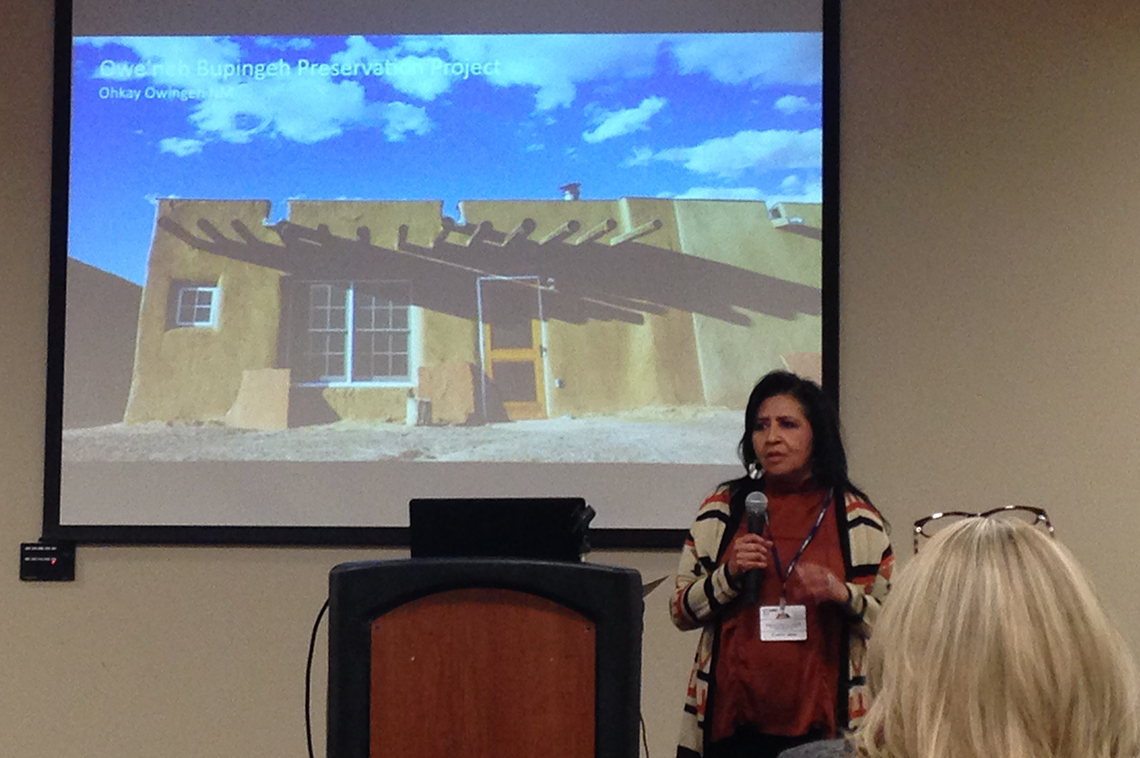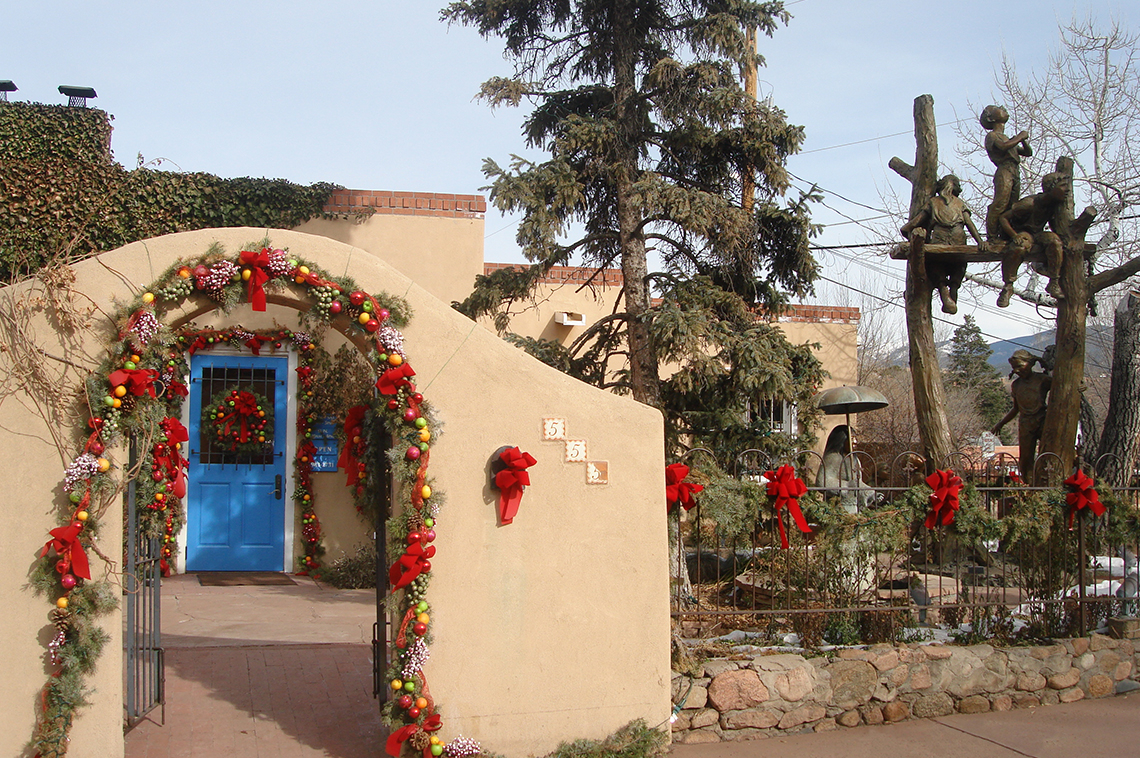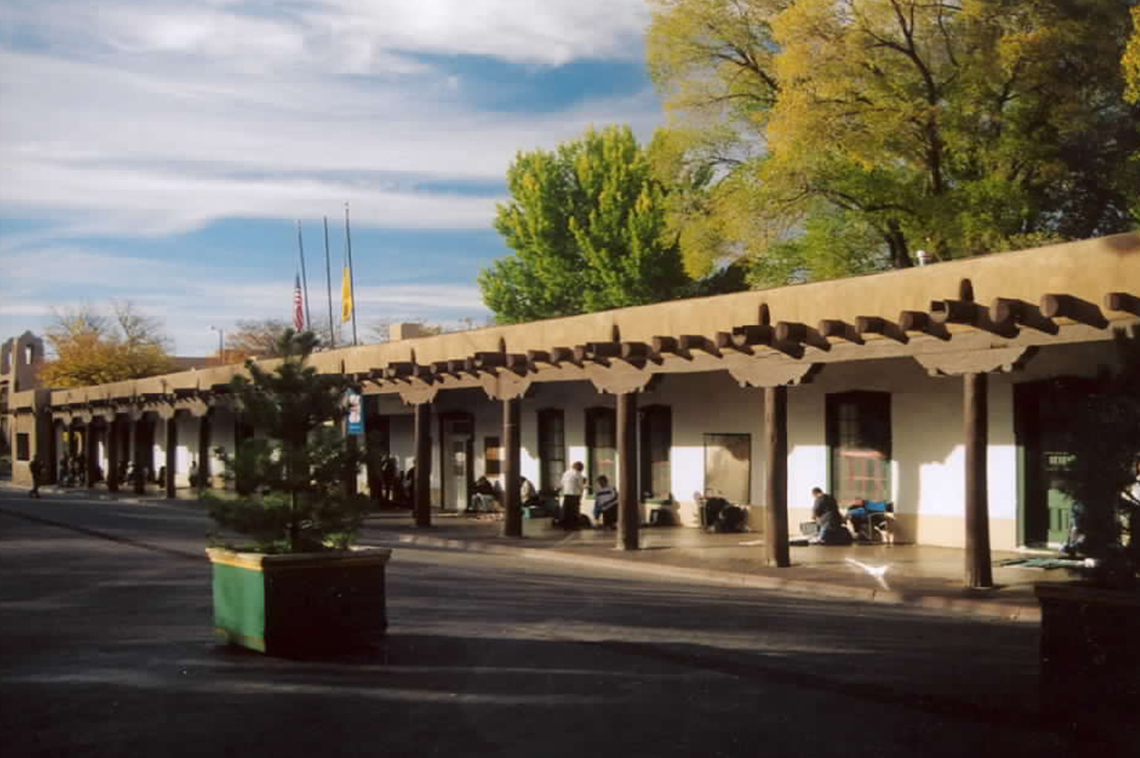


What is “authenticity”? Why is it important to creative placemaking? Who decides what is authentic?
Several sessions at the Creative Placemaking Leadership Summit West, held this past February in Albuquerque, raised these questions and incited spirited discussion.
In the session “A Critical Approach to Historic Preservation and Creative Placemaking in Northern New Mexico,” panelists examined the concept of authenticity through the lens of cultural preservation efforts happening in their state.
Tomasita Duran of the Ohkay Owingeh Housing Authority and Shawn Evans of AOS Architects spoke about their collaborative revitalization and preservation efforts in the Ohkay Owingeh pueblo near Santa Fe.
Duran explained that, though the Tewa pueblo was established over 600 years ago, “it is not a museum—this is a living place where families have their homes here and now.” As such, plans for the community’s architectural infrastructure needed to provide for quality housing within both historic and new buildings, while respecting the area’s traditional forms. In the end, “the residents of Ohkay Owingeh were more interested in the restoration of laughter than the restoration of mud plaster,” Evans said.
Duran and Evans described the colonial view of preservation as focusing largely on objects and buildings, whereas the indigenous view is more about language, stories, and customs—aka culture.
“In New Mexico, as long as a building looks like adobe, we don’t really care what goes on inside it,” Evans said. This colonial approach relies on what architects call the “period of significance”—the span of time during which “significant” events and activities are held to have occurred. Therefore, the period of significance always lies in the past: for example, “July 4, 1776,” or “the Civil War.” The indigenous perspective, on the other hand, is likely to posit that that the period of significance is tomorrow.
A photo of the Ohkay Owingeh project showed a resident outside his adobe home with a satellite dish visible on the roof. “We think we shouldn’t see something like that in a place like this because it confuses our sense of time,” Evans observed. “But I’ve come to see that reaction as absurd. We want our places to be alive.”
Andrew J. Wulf and Alicia Romero spoke about their work at the New Mexico History Museum, with a focus on the Palace of the Governors, the oldest public building in the United States. Constructed in the early 17th century as the Spanish seat of government for what is now the American Southwest, the Palace today hosts a history library, art exhibitions, and education programs.
But Wulf and Romero envision different possibilities. They spoke about their interests in what the historic space could offer contemporary New Mexicans as a place to once again gather and discuss the issues of the day; a place more flexible, reactive, and civically engaged. Because only nine photos exist of the Palace before it became a museum (and those only show the western half of the building), questions about how to restore it “authentically” will always remain. This information vacuum can be frustrating, but the panelists also explained that it frees today’s caretakers to focus on the building’s “intangible heritage”—what its cultural identity was, is, and could be.
Of the region at large, Evans said, “Santa Fe has got to be one of the most regulated cities in the country, from an aesthetic perspective. Now we’re asking: Who made these rules? Are they serving the culture of Santa Fe? Or are they serving an economic development purpose? I don’t think our citizens have been very engaged in this discussion. It could be that this is how they want their place governed, though my hunch is that’s not right.”
Evans noted that questions like these raise the potential for deep discussion in any community about its past, present, and future—”which is what creative placemaking itself is all about.”
“Defining authenticity requires multiple parties,” he said. “It’s not something anyone gets to declare.”
→ Other quotations from the session and post-session discussion:
- “We want to think about heritage in a new way—maybe as a verb! Or at least an active noun. It can be about the future.”
- “As it stands, preservation = appropriation = gentrification. But does it have to be that way?”
- “What can creative placemaking learn from intangible heritage?”
- “Who’s asking for all this preservation? In many indigenous cultures, things come and go; transience is the natural order of things. Too many preservation efforts try to stop time. That’s counternatural.”
→ Further reading:
- Preservation for People: A Vision for the Future: This report by the National Trust for Historic Preservation highlights the role of lifeways and cultural practices in places—as well as the more oft-discussed role of buildings in places. It asks what a place should sound like, smell like, or feel like in order to best preserve its heritage—not just what it should look like.
- The Power of Place: Urban Landscapes as Public History: Historian and architect Dolores Hayden’s award winning book proposes new perspectives on gender, race, and ethnicity to broaden the practices of public art and urban preservation.
- Keepers of the Treasures: Protecting Historic Properties and Cultural Traditions on Indian Lands: This National Park Service report, in the words of one panelist, explains “why historic preservation as we’ve been doing it doesn’t work.”





